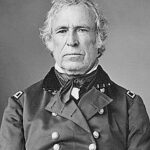The Presidential Stand Against Compromise
President Zachary Taylor’s opposition to Henry Clay’s Compromise of 1850 marked a critical turning point in American politics. Taylor rejected the comprehensive package designed to resolve territorial slavery disputes. His military background shaped his direct approach to governance. ⚠️ The president’s inflexibility threatened to accelerate the nation’s march toward civil war.
Clay’s Complex Compromise Package
Henry Clay crafted five separate bills to address mounting sectional tensions. The package included California’s admission as a free state and a stronger Fugitive Slave Act. Taylor Compromise 1850 negotiations stalled due to presidential resistance. Clay hoped to balance Northern and Southern interests through careful political maneuvering.
Rising Sectional Crisis
Southern states threatened secession if slavery expansion faced restrictions. Northern abolitionists demanded immediate action against slavery’s spread. 📊 Congressional debates grew increasingly hostile throughout 1849 and 1850. Taylor’s opposition to compromise measures intensified these dangerous political divisions.
Impact:
Political Deadlock and Congressional Chaos
Taylor’s stance created unprecedented congressional gridlock throughout early 1850. Southern Democrats threatened immediate secession if compromise failed. Northern Whigs split between supporting their president and seeking sectional peace. 🔥 The political crisis paralyzed normal legislative business for months.
Sectional Tensions Reach Breaking Point
Taylor Compromise 1850 opposition pushed both regions toward extreme positions. Southern fire-eaters gained influence by rejecting any negotiated settlement. Northern radicals similarly hardened their anti-slavery positions. The middle ground for peaceful resolution rapidly disappeared during this critical period.
Unexpected Resolution Through Presidential Death
Taylor’s sudden death in July 1850 dramatically changed the political landscape. Vice President Millard Fillmore embraced Clay’s compromise measures immediately. 📉 The crisis that threatened immediate civil war found temporary resolution. However, Taylor’s opposition had already demonstrated how quickly sectional tensions could explode into national crisis, foreshadowing the conflicts that would emerge throughout the 1850s.
